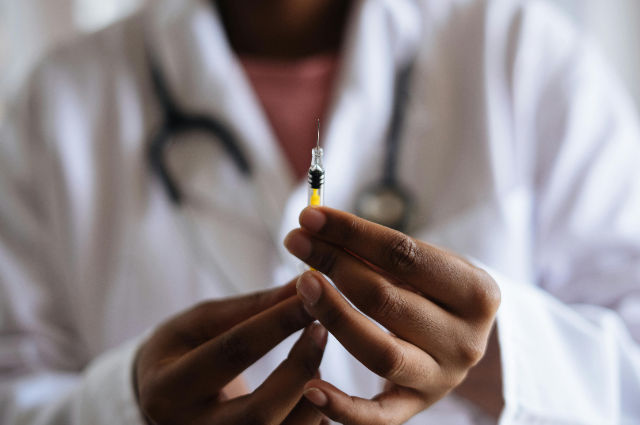
Measles and rubella are two highly contagious viral diseases that pose significant risks, including severe health complications and in some cases even death if timely medical intervention is not provided. Recognizing their rapid spread and potential dangers, India has prioritized the elimination of these diseases.
The Global Perspective on Measles Vaccination
According to the World Health Organization (WHO), 22 million children worldwide had missed their first dose of the measles vaccine in 2023. This alarming statistic highlights the critical role of vaccines in preventing the spread of infectious diseases like measles and rubella.
The efforts to combat these diseases are already showing results in India. As per the Ministry of Health and Family Welfare, the country witnessed a 73% reduction in measles cases and a 17% decline in rubella cases in 2024 compared to the previous year.
The Goal was always of Disease Elimination by 2026
India is striving to eradicate measles and rubella by 2026. To achieve this, the National Zero Measles-Rubella Elimination Campaign 2025-26 was launched virtually by JP Nadda, the Union Minister of Health and Family Welfare, during World Immunization Week (April 24-30).
During the campaign's inauguration, the minister emphasized the importance of ensuring complete immunization coverage. He highlighted that immunizing children with two doses of the combined measles and rubella vaccine would help provide a healthier future for them. Remarkably, between January and March 2025, 332 districts reported zero measles cases, while 487 districts recorded no rubella cases—marking a significant achievement in the fight against these diseases.
Vaccination Coverage: A Vital Tool
Under India's Universal Immunisation Programme, all eligible children receive two doses of the measles-rubella (MR) vaccine free of charge. These doses are administered when children are 9-12 months old and then again at 16-24 months.
As of 2024-25, the data from the Health Management Information System (HMIS) reveals impressive coverage rates: 93.7% of children received the first dose of the MR vaccine and 92.2% received the second dose.
Strategies for the Future
The government has set ambitious goals to maintain vaccination coverage above 95%, strengthen disease surveillance and ensure readiness to tackle outbreaks. Public awareness campaigns and enhanced support systems are key pillars of this strategy that was aimed at keeping India on track towards eliminating measles and rubella within the set timeline.
A Tribute to Global Immunization Drives: Humanity’s Lifesaving Achievement
The vaccine campaigns launched in the latter half of the 20th century are among the most remarkable feats of human progress. These global efforts have led to the eradication of smallpox, brought polio to the brink of defeat and significantly improved survival rates for children by offering them the opportunity not just to live but to thrive.
Celebrating 50 Years of Immunization Progress
This year's World Immunization Week marks an important milestone—50 years since the inception of the Expanded Programme on Immunization (EPI) in 1974. It serves as a moment to reflect on the collective endeavours that have saved countless lives from vaccine-preventable diseases. The campaign also calls on nations to strengthen their immunization programs to safeguard future generations.
Transforming Child Survival in Five Decades
In just fifty years, global vaccination efforts have profoundly transformed society. Gone are the days when the death of a child from preventable diseases was a common fear among parents. Today, vaccination campaigns provide children with the chance to survive and flourish, fundamentally altering this narrative.
The Evolution of Immunization Programs
The Expanded Programme on Immunization initially aimed to protect children from six key diseases. Over time, this scope has expanded to encompass 13 universally recommended vaccines, covering individuals across their lifespan. In addition, there are now 17 vaccines available with context-dependent recommendations. Recognizing this broader impact, the program has been renamed the Essential Programme on Immunization to emphasize its comprehensive approach.
Challenges Post-Pandemic
The COVID-19 pandemic disrupted the steady progress made in immunization. Although 2022 saw 4 million more children vaccinated globally compared to 2021, a concerning figure remains—20 million children missed one or more of their vaccines. Issues such as growing conflicts, economic challenges and vaccine hesitancy have hindered efforts to reach these children. As a result, diseases like diphtheria and measles, once nearly eradicated, have re-emerged in sudden outbreaks.
The Path Forward
While global vaccine coverage is commendable with four out of every five children fully vaccinated, significant gaps persist. This emphasizes the urgent need to overcome existing barriers and ensure every child has access to life-saving vaccines. Sustained investments in immunization programs and global co-operation will be crucial in realizing this goal.
Prioritizing Vaccines: A Global Call to Action
Vaccination has proven to be one of the most effective public health measures in history, saving millions of lives and preventing numerous diseases. However, achieving universal vaccination coverage requires unwavering commitment from governments and global organizations alike. Below are key strategies to ensure immunization programs remain a cornerstone of healthcare across the world.
Making Vaccines a Priority for Governments
Governments across all nations must recognize vaccines as a top priority in their healthcare agendas. This involves not only acknowledging their life-saving potential but also incorporating immunization goals into policies and national strategies. Advocacy efforts should focus on ensuring that vaccination programs are viewed as essential pillars of public health.
Vaccination is not merely a childhood initiative; it should be embedded in healthcare systems throughout an individual's life course. From infant immunization schedules to vaccines for older adults, governments and healthcare providers must adopt a holistic approach that guarantees equitable access to vaccinations for everyone, regardless of age or circumstances.
. . .
References:
